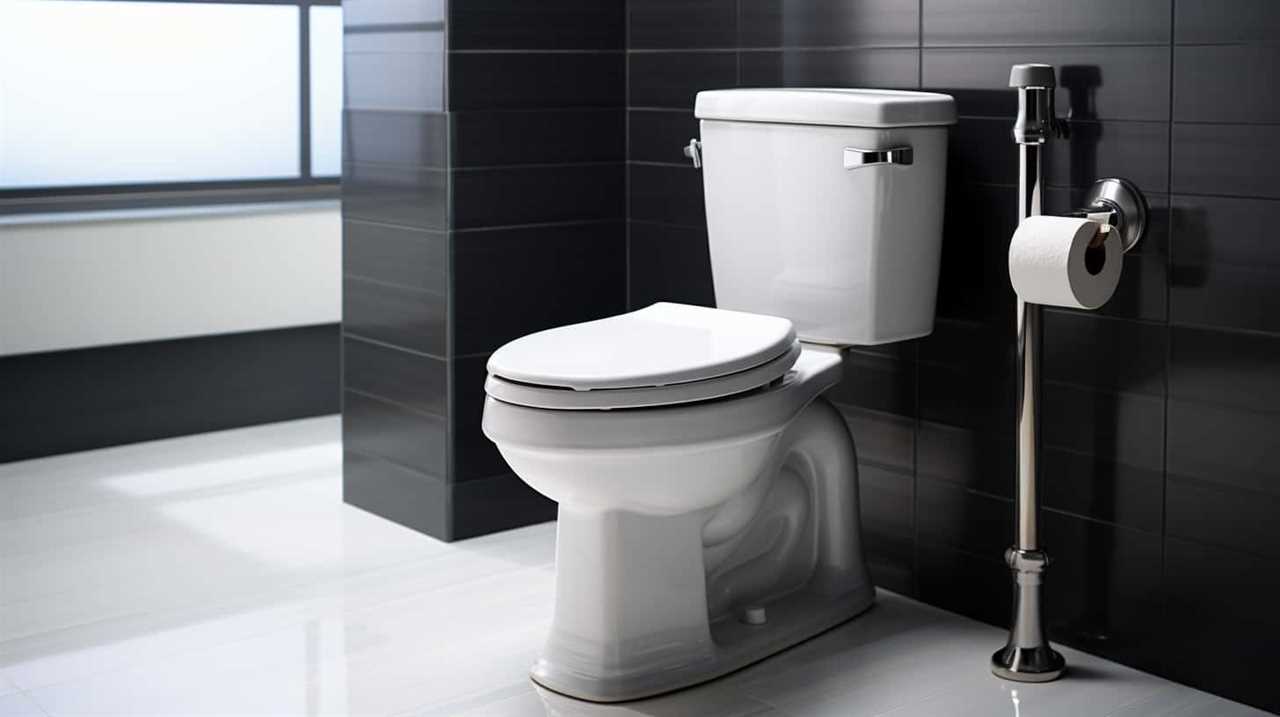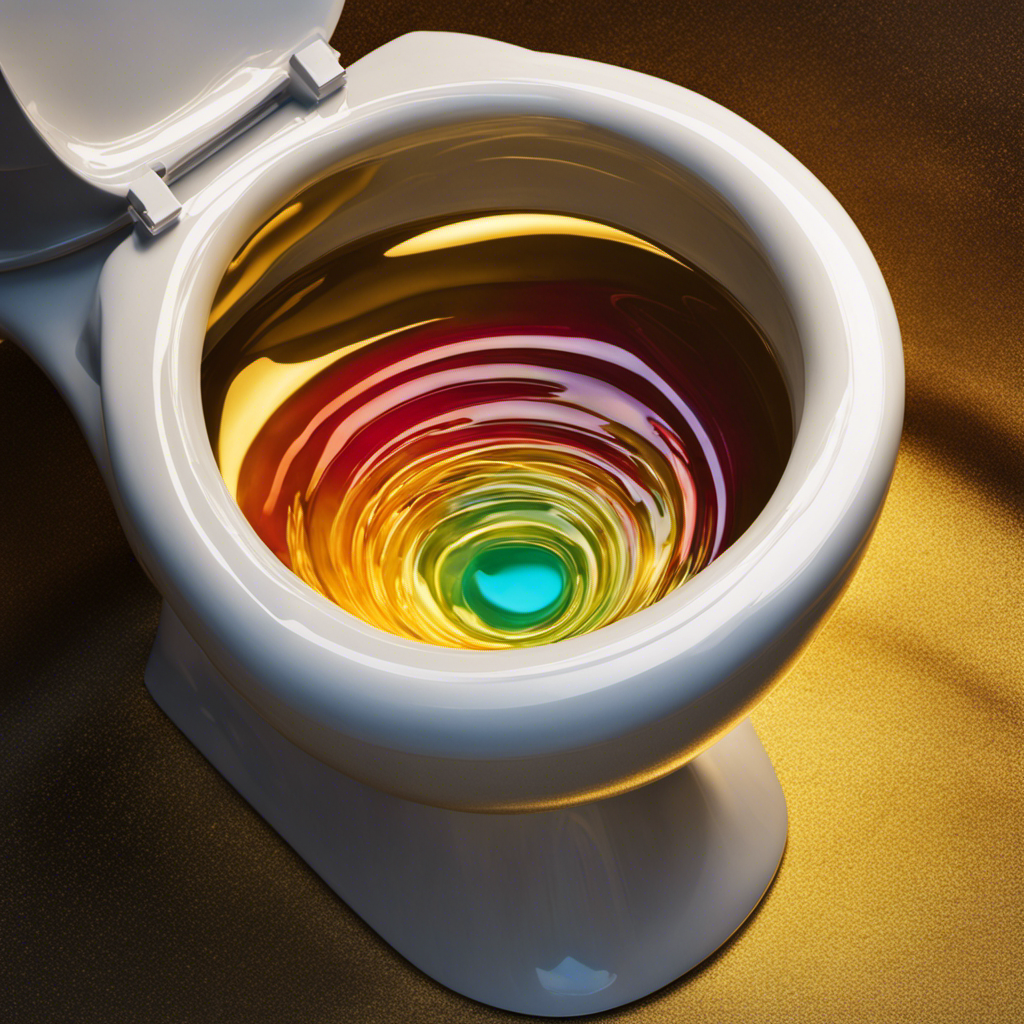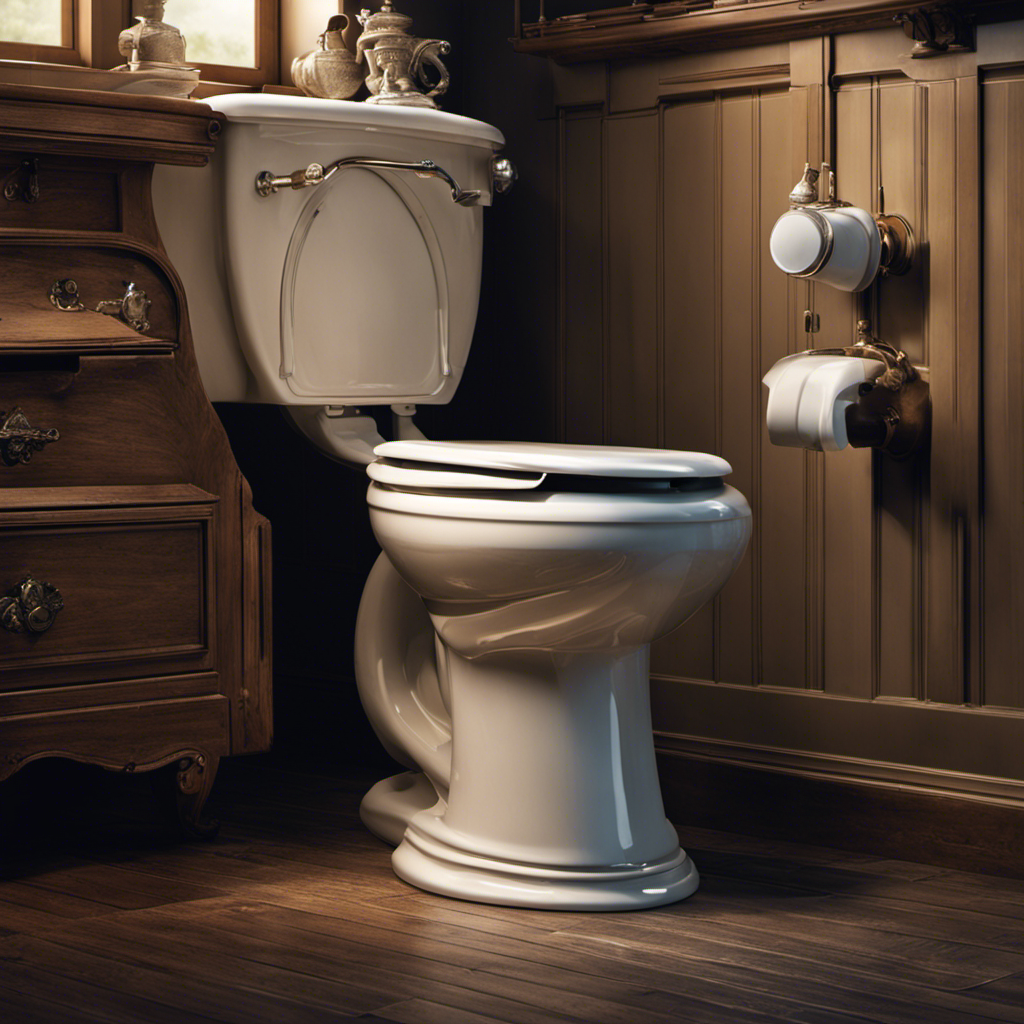Ever curious about attaining a truly effective toilet flush? Search no more! In this article, we’re going to show you exactly how to execute a complete and professional flush of your toilet.
We’ll cover everything from checking the water level and adjusting the float to cleaning the rim jets and using a toilet auger.
Upgrade your toilet game with our tips and maintain a sparkling clean and efficient toilet for years to come.
Let’s get flushing!
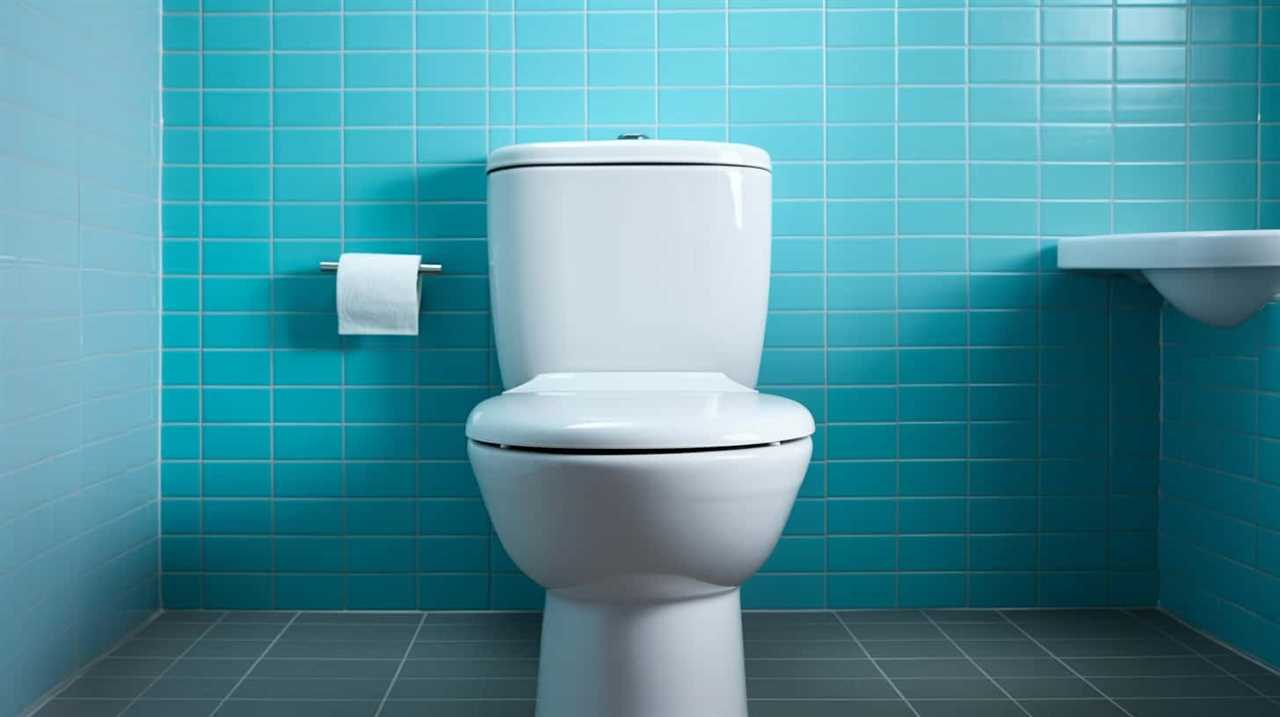
Key Takeaways
- Adjust the water level to be approximately 1 inch below the top of the overflow tube to ensure proper flushing.
- Regularly inspect and replace the flapper valve if it is worn or misaligned to prevent weak flush, constant running, and phantom flushes.
- Clean the rim jets to remove mineral deposits and maintain a hygienic and efficient flushing system.
- Clear clogs using a plunger, toilet auger, or enzyme-based cleaners, and seek professional assistance if the clog persists.
Check the Water Level
We should first check the water level in our toilet using a ruler or measuring tape. To ensure proper flushing, it’s crucial to inspect the water supply and ensure that the water level is at the correct height. An inadequate water level can hinder the flushing process and lead to incomplete evacuation of waste.
To check the water level, place a ruler or measuring tape vertically against the inside of the toilet tank. The water level should be approximately 1 inch below the top of the overflow tube. If the water level is too high or too low, it can be adjusted to the correct height.
In addition to inspecting the water level, it’s essential to check the toilet handle. The handle should move smoothly and without any resistance. If the handle is loose or difficult to operate, it may need to be tightened or replaced. A malfunctioning handle can prevent the toilet from flushing properly.
Once the water level and toilet handle have been inspected and any necessary adjustments made, we can move on to the next step: adjusting the float. Ensuring that the float is properly adjusted will further optimize the flushing process and promote efficient water usage.

Adjust the Float
To adjust the float, start by locating the float adjustment screw on the fill valve. The float is a mechanism that controls the water level in the toilet tank. If the water level is too high or too low, it can affect the flushing performance of the toilet. To troubleshoot a toilet flush, adjusting the float may be necessary.
To begin, turn off the water supply to the toilet by closing the shut-off valve. This will prevent any water from flowing into the tank while you make adjustments. Next, locate the float adjustment screw on the fill valve, usually located on the top of the valve. Using a screwdriver, turn the adjustment screw clockwise to lower the float and decrease the water level, or counterclockwise to raise the float and increase the water level.
Make small adjustments and flush the toilet to test the water level. Repeat the process until the desired water level is achieved. It’s important to ensure that the water level is set according to the manufacturer’s recommendations for optimal flushing performance.
Inspect the Flapper Valve
Let’s now turn our attention to the flapper valve, an essential component of your toilet’s flushing mechanism. Proper maintenance of the flapper valve is crucial to ensure a complete and efficient flush.
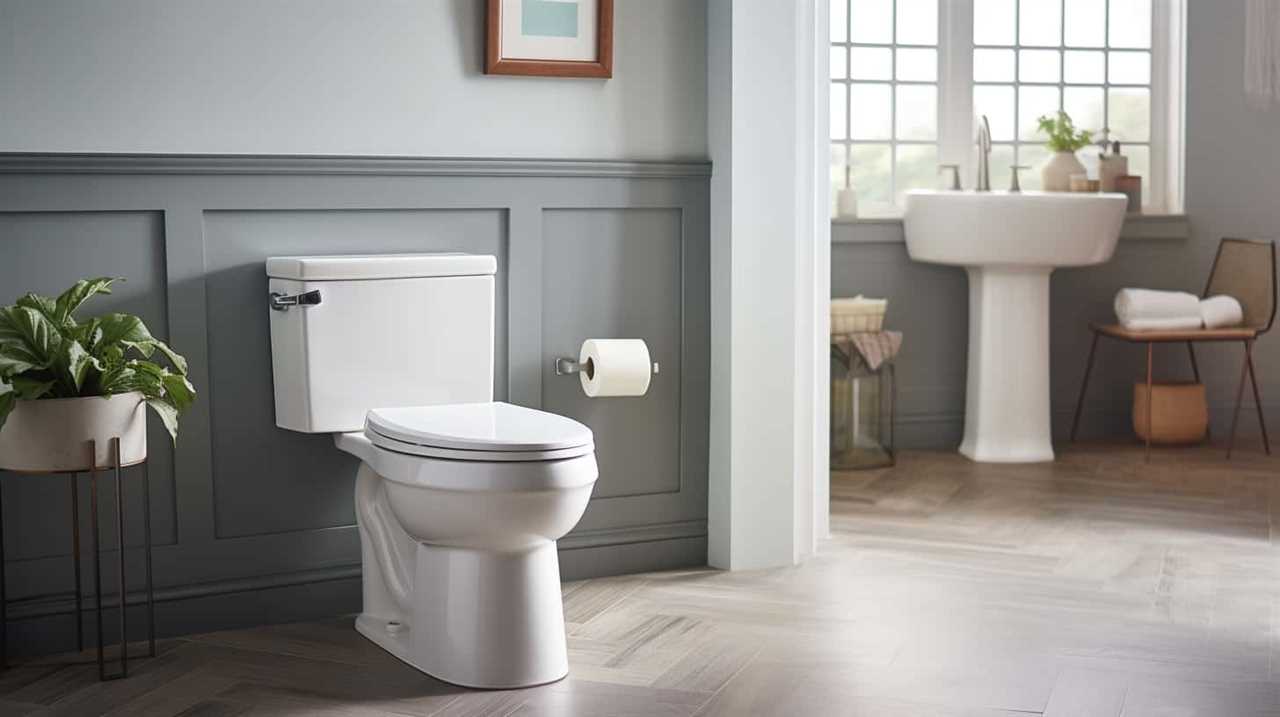
In this section, we’ll discuss how to inspect the flapper valve, including common issues that may arise and how to address them.
Flapper Valve Maintenance
To ensure proper functioning, it is important to regularly inspect the flapper valve in your toilet. The flapper valve is a crucial component that controls the flow of water from the tank into the bowl during a flush. Over time, the flapper valve may develop issues that can affect the performance of your toilet. By conducting routine inspections, you can identify and address any problems before they become major headaches. Here are some common flapper valve troubleshooting and maintenance tips:
| Problem | Possible Cause | Solution |
|---|---|---|
| Weak flush | Worn flapper | Replace the flapper valve with a new one |
| Constant running | Misaligned seal | Adjust the flapper valve to create a tight seal |
| Phantom flushes | Chain length | Adjust the chain length to prevent accidental flushes |
Replacing the Flapper Valve
Now, let’s inspect the flapper valve to determine if it needs to be replaced in order to ensure a complete flush of your toilet. Flapper valve troubleshooting is essential to identify any issues that may hinder the proper functioning of the valve.
Start by removing the toilet tank lid and locating the flapper valve. Check for any visible signs of damage or wear, such as cracks or tears. Additionally, ensure that the flapper is properly aligned and sealing the flush valve opening completely. If you notice any problems, it’s time to replace the flapper valve.

To do this, turn off the water supply, flush the toilet to empty the tank, and remove the old flapper valve. Install the new flapper valve according to the manufacturer’s instructions, ensuring a secure and watertight fit.
Once replaced, test the flush to ensure a complete and efficient operation.
Common Flapper Valve Issues
To properly inspect the flapper valve for common issues, we’ll begin by turning off the water supply to the toilet. This will prevent any water from flowing while we examine the valve. Once the water supply is turned off, follow these troubleshooting steps:
- Check for any visible damage or wear on the flapper valve. Look for cracks, tears, or warping that may be causing leaks.
- Ensure that the flapper is properly aligned and seated on the flush valve opening. Sometimes, misalignment can lead to water leaks.
- Clean the flapper and the flush valve opening to remove any debris or mineral build-up that may be interfering with its proper functioning.
- Test the flapper valve by flushing the toilet and observing its performance. Pay attention to any signs of leakage or incomplete flushing.
If these troubleshooting steps don’t resolve the issue, it may be necessary to consider a flapper valve replacement. Refer to our previous subtopic on ‘Replacing the Flapper Valve’ for tips on how to do this.

Clean the Rim Jets
We start by removing the toilet tank lid.
To clean the rim jets of your toilet, you’ll need some cleaning products and a few simple steps. Rim jets are the small holes located around the inside rim of the toilet bowl. Over time, mineral deposits can build up in these jets, causing reduced water flow and affecting the effectiveness of your flushing system.
To remove mineral deposits, first, turn off the water supply to the toilet by turning the valve located near the floor. Then, flush the toilet to drain the water from the tank. Use a brush or a toothbrush to scrub the rim jets, making sure to remove any build-up. For stubborn deposits, you can use a mixture of vinegar and water or a commercial lime scale remover. Simply pour the solution into the rim jets and let it sit for a few minutes. Finally, scrub the jets again to remove any remaining deposits.
Once cleaned, turn on the water supply and flush the toilet to test the water flow. Regularly cleaning the rim jets will ensure a strong and efficient flush every time.
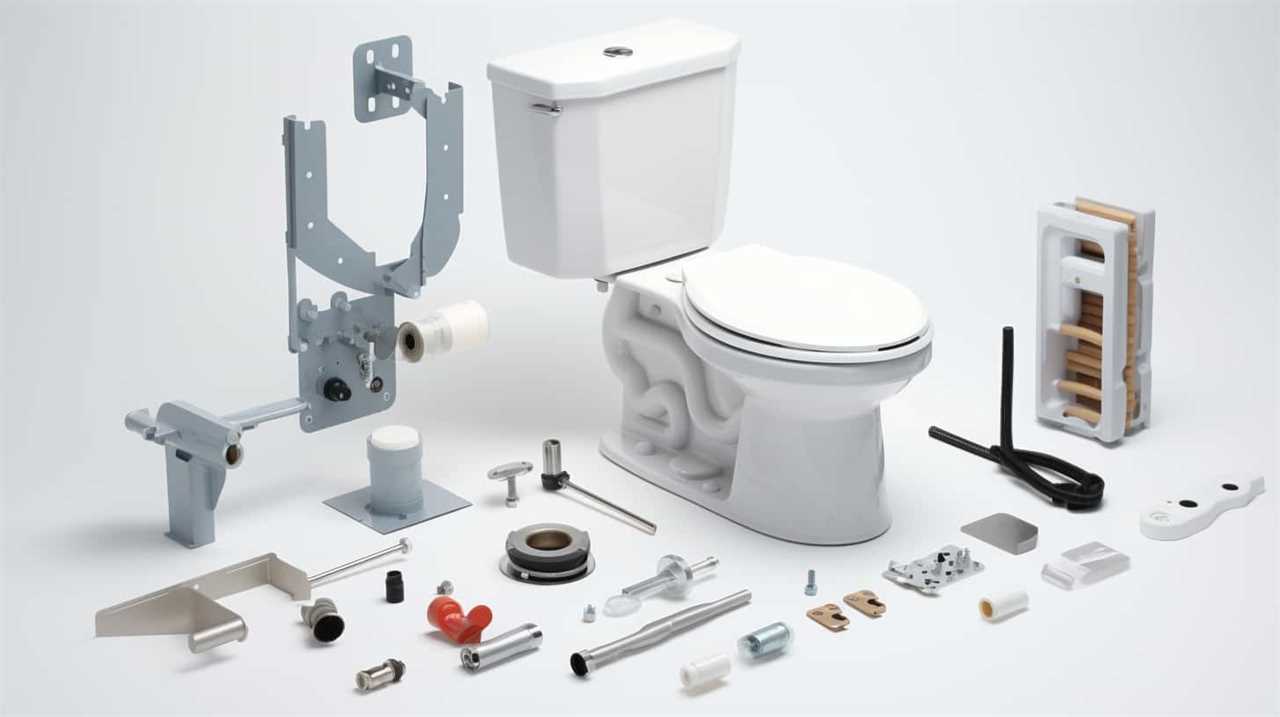
Clear Any Clogs
After cleaning the rim jets, we can address any clogs that may be affecting the flushing system. Clearing clogs is an essential step in troubleshooting flush issues. Here are some methods to help you clear any clogs effectively:
- Plunger: This simple tool can often do wonders in clearing minor clogs. Place the plunger over the drain hole and create a tight seal. Push and pull vigorously to generate suction and dislodge the clog.
- Toilet Auger: For more stubborn clogs, a toilet auger can be used. Insert the auger into the drain hole and rotate the handle clockwise while applying gentle pressure. This motion will help break up the clog and allow it to pass through.
- Enzyme-based Cleaners: If the clog is caused by organic matter, such as toilet paper or waste, an enzyme-based cleaner can be effective. These cleaners contain natural enzymes that break down organic material, facilitating its removal.
- Professional Assistance: If the clog persists despite your efforts, it may be necessary to seek professional help. A plumber will have the expertise and tools to tackle more complex clogs and ensure the proper functioning of your toilet.
Use a Toilet Auger
Let’s tackle the issue by utilizing a toilet auger to resolve any persistent clogs in the flushing system. A toilet auger, also known as a closet auger, is a tool specifically designed to clear blockages in toilets. It consists of a long, flexible cable with a handle on one end and a rotating auger or hook on the other.
To use a toilet auger, start by inserting the cable into the toilet bowl, making sure it goes past the trap and into the drainpipe. Rotate the handle clockwise to extend the cable further into the pipe. Once you feel resistance, continue rotating while applying gentle pressure to break up the clog.
If a toilet auger isn’t available, there are alternative methods to consider. One option is using a plunger, which can help dislodge minor clogs. Another alternative is a chemical drain cleaner specifically formulated for toilets, but be sure to follow the instructions carefully and use it sparingly.

If you encounter any issues while using a toilet auger, such as the cable getting stuck or the clog not clearing, there are a few troubleshooting steps to follow. First, make sure the cable is properly inserted into the drainpipe. If it’s stuck, try rotating the handle in both directions to dislodge it. If the clog persists, you may need to call a professional plumber for further assistance.
Upgrade to a High-Efficiency Toilet
Let’s talk about upgrading to a high-efficiency toilet. These toilets are designed to save water, making them an eco-friendly choice.
The benefits of high-efficiency toilets include reducing water usage and lowering utility bills.
When considering installation, it’s important to factor in the toilet’s dimensions and compatibility with your plumbing system.

Water-Saving Toilet Options
We recommend upgrading to a high-efficiency toilet for water-saving purposes. High-efficiency toilets utilize advanced water saving toilet technology, allowing you to conserve water without sacrificing performance.
Here are four key benefits of upgrading to a high-efficiency toilet:
- Reduced water consumption: High-efficiency toilets use significantly less water per flush compared to traditional toilets, helping you save water and reduce your household’s environmental impact.
- Improved flushing power: Despite using less water, high-efficiency toilets are designed to provide powerful flushes, ensuring effective waste removal.
- Water conservation strategies: High-efficiency toilets often incorporate innovative features such as dual-flush systems, which allow you to choose between a partial flush for liquid waste and a full flush for solid waste, further reducing water usage.
- Potential cost savings: By reducing your water consumption, upgrading to a high-efficiency toilet can lead to lower water bills over time.
With these water-saving toilet options, you can contribute to water conservation efforts while maintaining optimal toilet performance.
Benefits of High-Efficiency Toilets
Upgrading to a high-efficiency toilet not only helps conserve water and reduce environmental impact, but it also offers additional benefits that make it a worthwhile investment.
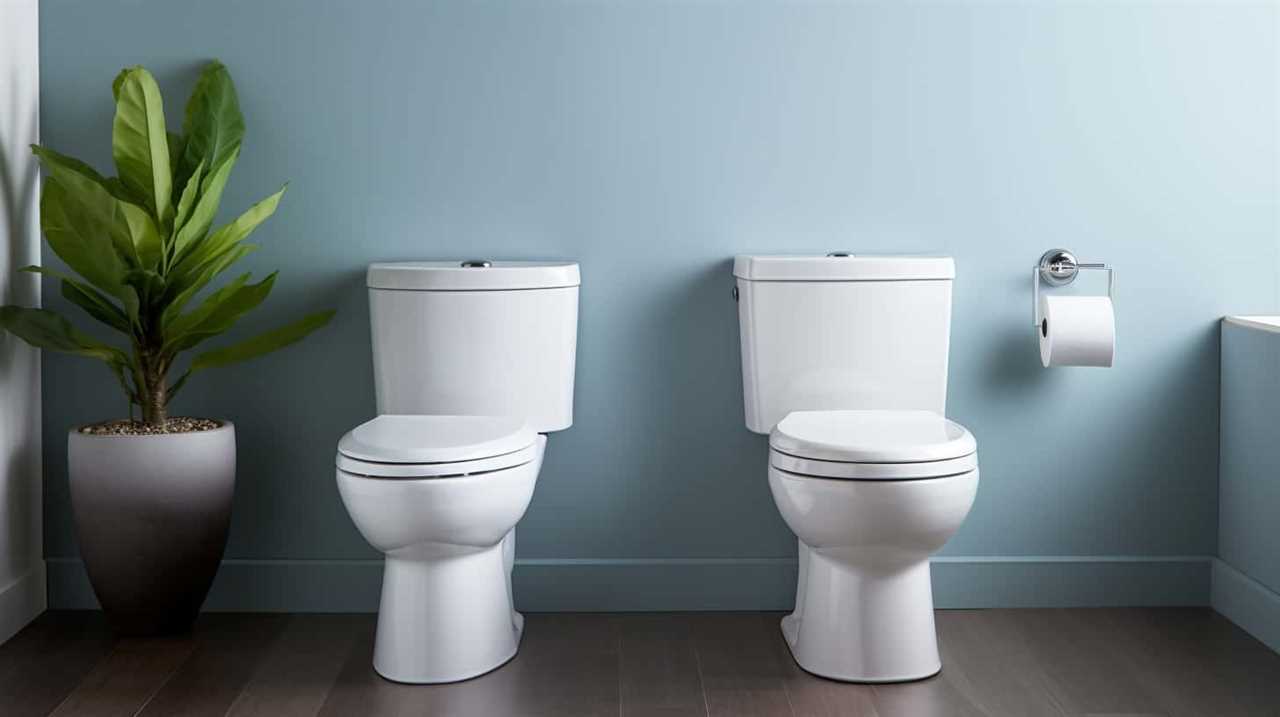
High-efficiency toilets are designed to use less water per flush compared to traditional toilets, resulting in significant water-saving benefits. By using advanced flushing technology and optimizing water usage, these toilets can save up to 20% more water per flush. This not only helps homeowners reduce their water bills but also contributes to water conservation efforts.
Additionally, high-efficiency toilets often come with features such as dual-flush options, which allow users to choose between a partial or full flush depending on the waste amount. This versatility further enhances water efficiency and reduces the environmental impact associated with toilet usage.
Investing in a high-efficiency toilet can be a smart choice for those looking to save water, reduce their carbon footprint, and contribute to a more sustainable future.
Installation Considerations and Tips
To ensure a successful installation and optimal performance of your high-efficiency toilet, there are several key considerations and tips to keep in mind.

- Proper Location: Choose a location that allows for easy access to the water supply and waste pipe. Ensure that the floor is level and stable to prevent any future issues.
- Water Supply: Check the water pressure and ensure it meets the manufacturer’s recommendations. Install a shut-off valve to allow for easy maintenance and repairs.
- Flange and Wax Ring: Inspect the flange for any damage or cracks and replace if necessary. Use a high-quality wax ring to create a watertight seal between the toilet and the waste pipe.
- Troubleshooting Techniques: If you experience any leaks or flushing issues, check for loose connections, adjust the water level in the tank, and ensure the flapper is functioning properly.
Considering these installation tips and troubleshooting techniques will help you successfully upgrade to a high-efficiency toilet.
Now, let’s explore another option to consider: a dual flush system.
Consider a Dual Flush System
Installing a dual flush system can greatly improve the efficiency and water usage of your toilet. Dual flush toilets have two buttons or handles, allowing you to choose between a full flush and a partial flush. This innovative system provides several benefits for water conservation and cost savings.
The main advantage of a dual flush system is its ability to save water. The partial flush option is typically used for liquid waste and uses significantly less water than a full flush. This can result in substantial water savings over time, as liquid waste comprises the majority of toilet usage. By using less water for flushing, you can contribute to water conservation efforts and reduce your water bill.

Additionally, dual flush systems are more efficient in removing waste compared to traditional toilets. The full flush option provides a powerful flush that effectively clears solid waste, ensuring cleanliness and hygiene. This combination of efficiency and water conservation makes dual flush toilets an excellent choice for environmentally conscious individuals.
To install a dual flush system, consult a professional plumber or follow the manufacturer’s instructions carefully. It’s crucial to select a dual flush system that’s compatible with your toilet model and meets your specific needs.
Maintain Regular Toilet Maintenance
Regularly cleaning and inspecting your toilet is essential for proper maintenance. Neglecting this task can lead to various issues such as clogs, leaks, and unpleasant odors. Here are some important steps to maintain your toilet:
- Clean the toilet tank: Remove the tank lid and inspect the components inside. Check for any signs of damage or wear, such as cracks or rust. Clean the inside of the tank using a mild detergent or vinegar to remove any mineral deposits or buildup.
- Clean the toilet bowl: Use a toilet bowl cleaner and a toilet brush to thoroughly clean the inside of the bowl. Pay attention to the rim, the waterline, and the trapway. Scrub gently to remove any stains or residue. Flush the toilet to rinse.
- Check for leaks: Inspect the base of the toilet for any signs of water leaks. Look out for puddles or dampness around the toilet. If you notice any leaks, it’s important to address them promptly to prevent further damage.
- Maintain proper water levels: Ensure that the water level in the toilet tank is at the recommended level indicated by the manufacturer. Adjust the float valve if necessary to maintain the correct water level.
Frequently Asked Questions
How Often Should I Clean the Rim Jets of My Toilet?
Cleaning the rim jets of your toilet is essential for maintaining proper flushing efficiency. The cleaning frequency depends on usage, but a general guideline is to clean them at least once every few months.

Using the best cleaning products specifically designed for toilets will ensure effective removal of any mineral deposits or grime that may clog the jets.
Regular maintenance of the rim jets will help prevent blockages and ensure a thorough flush every time.
What Are Some Common Signs of a Clogged Toilet That I Should Look Out For?
Common signs of a clogged toilet are often easily recognizable. One might notice water rising to an unexpected level or slowly draining away.
Additionally, a foul odor may emanate from the toilet bowl. Sometimes, the water may even overflow onto the floor, causing a messy situation.

These indicators suggest that there may be a blockage in the plumbing system. It’s important to address these signs promptly to prevent further complications and ensure the proper functioning of the toilet.
Can I Use a Plunger Instead of a Toilet Auger to Clear a Clog?
Yes, we can use a toilet plunger instead of a toilet auger to clear a clog. The plunger uses suction and pressure to dislodge the blockage. It’s important to create a tight seal between the plunger and the toilet bowl to maximize the effectiveness.
A toilet auger, on the other hand, is a more specialized tool that can be used for tougher clogs. It has a long, flexible cable that can reach deeper into the pipes to break up the blockage.
Are There Any Specific Maintenance Tasks I Should Perform on a High-Efficiency Toilet?
When it comes to high-efficiency toilets, there are some important maintenance tasks that should be performed regularly. These maintenance tips can help ensure optimal performance and prevent potential issues.

It’s recommended to follow a troubleshooting guide to identify any problems and address them promptly. By properly maintaining your high-efficiency toilet, you can keep it in good working condition and maximize its water-saving capabilities.
What Are the Benefits of Upgrading to a Dual Flush System?
Upgrading to a dual flush system has significant benefits. It uses advanced water saving technology, allowing you to choose between a partial or full flush, depending on the waste. This reduces water consumption and lowers your environmental impact.
Conclusion
In conclusion, after following the steps outlined above, you should have no problem completely flushing your toilet.
It’s ironic how such a simple task can sometimes be so complicated. But with a little maintenance and some troubleshooting, you can ensure that your toilet operates efficiently and effectively.

So go ahead, give it a try and enjoy the satisfaction of a fully flushed toilet.
Happy flushing!




